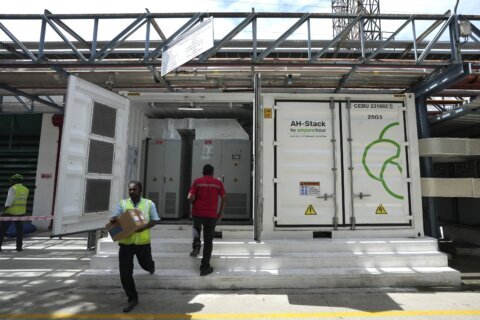Owning a house can sometimes feel like being the foreman of a project that never ends. You need new gutters one year, and the driveway needs resurfacing the next. Another big item that a lot of homeowners face is replacing their home’s siding. There are a lot of important decisions required before you can even begin this project.
— Popular types of siding.
— ROI of new siding.
— Costs by material and type.
— How to choose siding.
— Installation day.
[READ: Driveway Ideas to Maximize Curb Appeal.]
Popular Types of New Siding
Siding is one of those things that tends to go through popularity cycles. Brick and stone are pretty much eternal, but other types of siding rise and fall in popularity and, as the technology changes, so does accessibility to the general public. Today’s most common siding types offer homeowners a lot of design and materials options.
“Vinyl, fiber cement and wood are some of the most popular siding options available,” says Craig Ricks Jr., president of Acadian Windows and Siding in Destrehan, Louisiana. “Vinyl siding tends to be low cost, low maintenance and more weather-resistant than wood siding, and it’s also available in a range of colors and styles. Fiber cement siding is especially durable against a range of weather conditions, making it suitable for homes that face rain, high winds, sleet or snow. It is also fire-resistant.
“Wood siding remains popular, especially in older homes. It can be painted or stained any color and comes in a variety of styles. But it is susceptible to buckling or swelling from moisture, rotting and getting damaged by termites and other insects.”
The ROI of New Siding
Although all siding projects are priced based on materials plus local labor costs, it’s still good to have some idea of what to expect.
According to Remodeling Magazine’s 2023 Cost vs. Value Report, vinyl siding replacement costs more than $16,000 nationally, and fiber-cement siding should cost around $19,000, on average. However, those dollars do tend to come back if you sell your home.
“Siding has a great ROI, typically valued somewhere between 75%-85% (according to NAR it’s 82%-86%),” says Alyssa Marshall, marketing and community engagement officer for Marshall Building & Remodeling in Riverside, Rhode Island.
“As far as value increase, you can measure this differently. An improvement in curb appeal boosts a home’s value by 7%-10%. Siding can also boost efficiency, which can save you (or the next homeowner) money. Repainting every five years can cost you quite a bit. Some people weigh that against the cost of replacement panels,” Marshall says.
[The Pros and Cons of Metal Roofing]
Costs of Siding Materials and Types
Generally, you’ll be looking at these popular home siding materials: vinyl, fiber cement, brick, metal, wood, stucco and stone.
While the material itself will be the biggest factor in determining cost, there are also material subtypes that can drive up — or down — prices. For example, natural stone siding will run you $42 per square foot, according to home services company Angi, while manufactured stone costs about $6.50 per square foot on average.
Stone Siding
Stone siding looks great, but it can be very expensive. Natural stone is the most expensive siding option, making it an option only for those with a large budget. Here’s how much it costs to install stone siding by type, according to Angi.
| Type of Stone | Cost Per Square Foot |
| Natural stone | $42 |
| Stone veneer | $11 to $13 |
| Faux stone | $6-$9 |
| Manufactured or cultured stone | $5 to $8 |
You don’t have to go with natural stone, though. Slate and basalt are two popular, more affordable options, with slate costing $4.50 to $10 per square foot and basalt costing $7 to $11 per square foot, according to Angi.
Vinyl Siding
Unlike stone, vinyl siding is among the most affordable types of siding for your home, and there a lot of options to choose from. Here’s how much you can expect to pay, according to HomeAdvisor:
| Type of Vinyl | Cost Per Square Foot |
| Shake siding | $3 to $10 |
| Traditional lap | $2 to $6 |
| Insulated vinyl | $4 to $12 |
| Vertical vinyl | $3 to $8 |
| Vinyl log | $3 to $5 |
| Dutch lap | $3 to $9 |
| Brick- or stone-look siding | $5 to $10 |
| Board and batten vinyl | $4 to $9 |
| Scalloped | $4 to $9 |
Fiber Cement Siding
According to Angi, fiber cement siding costs between $5 to $10 per square foot and is a versatile siding option.
Fiber cement can mimic other types of more expensive siding (like wood), making it at an attractive option for homeowners who don’t want to spend a ton of money on new siding:
| Fiber Cement Siding Type | Cost Per Square Foot |
| Shingle | $2 to $6 |
| Panel | $2.50 to $15 |
| Plank | $4 to $6 |
Brick Siding
Brick looks stately, is naturally fire-resistant, and provides good insulation. But brick isn’t cheap, costing $12,000 to $25,000 to add brick siding to a 2,500 square foot home, according to HomeAdvisor.
| Type of Brick Siding | Cost Per Square Foot |
| Real brick (4 inches) | $4 to $8 |
| Thin, real brick veneer strips | $3 to $10 |
| Faux brick veneer | $4 to $10 |
| Faux brick panel | $6 to $10 |
Metal Siding
Metal siding is durable, repels the hot sun, and won’t be eaten by bugs.
Tin siding is the cheapest type of siding you can get, but other types of metal siding can get pricey depending on the type of metal you want, according to HomeAdvisor.
Cheaper metal siding may also be less durable and need to be replaced in 15 years. Compare that to zinc, which is considerably more expensive, but it can last up to 100 years.
| Type of Metal | Cost Per Square Foot |
| Tin | $1 to $3 |
| Aluminum | $3 to $6 |
| Steel | $4 to $8 |
| Zinc | $15 to $25 |
| Copper | $20 to $35 |
[The Pros and Cons of Metal Roofing]
Wood Siding
The cost of wood siding heavily depends on the type of wood you want and where you live. Here’s how much wood siding costs, according to HomeAdvisor.
| Type of wood | Cost per square foot |
| Cedar | $3 to $10 |
| Pine | $1 to $5 |
| Redwood | $4 to $14 |
| Cypress | $1 to $5 |
| Hardwood (Teak, Ipe, Cumaru) | $4 to $15 |
| Accoya | $4 to $9 |
| Masonite | $1.50 to $3.50 |
| Composite | $3 to $7 |
Stucco Siding
Stucco is porous, so it’s not good for humid areas, but it can be great for dry locations like the Southwest. It’s also pretty low maintenance and can last 50 to 80 years. According to Angi, here’s how much you can expect to pay for Stucco siding.
| Type of stucco | Cost per square foot |
| Traditional | $7 to $9 |
| Smooth finish | $8 |
| Synthetic | $7 to $12 |
How to Choose Siding
Knowing that your siding choice is going to stick with your house (and you) for decades, it’s important to make the right call the first time. The right siding not only looks good, but is made to survive whatever nature may throw at it.
“Since siding acts as the outer shell of the home, its primary function is to protect the other building material elements and things and people that live within the home,” says Dan Gibbons, director of exteriors marketing at The AZEK Company in Chicago. So it’s essential that the siding choice is engineered to withstand the weather and climate conditions it will experience, Gibbons says.
“Simply put, the best siding products are those that look the best and last the longest,” he says. “The value of siding is not only based on the upfront price point, but also on the lifespan costs of maintenance and potentially replacement.”
[How to Find a Reliable Home Contractor]
How well your siding handles moisture can determine how long it will last without a lot of maintenance. Although you should maintain your siding, the more maintenance you have to do, the more your siding will cost over the longer term.
“When choosing between siding options, consider the level of maintenance you are willing to put into its upkeep,” says Chris (CJ) Johnson, director of product and marketing for Siding at Westlake Royal Building Products in Columbus, Ohio.
“One of the major drivers of maintenance is the water absorption characteristics of a siding. When a siding product absorbs water, it can expand, contract and rot or degrade the substrate. This is aggravated with freeze and thaw cycles. This is why something like wood siding can require scraping and repainting, while non-absorptive claddings like vinyl siding, cellular composite siding and poly-ash siding require far less ongoing maintenance,” Johnson says.
[A Home Maintenance Checklist for Every Season]
What to Expect On Installation Day
Once you’ve chosen a siding and installer that you love, and you’re excited about having it installed on your home, the reality of what that means will start to set in.
Unlike buying a new stove or putting in a little bit of landscaping, a siding install can be a big interruption to your life, and requires a fair amount of prep work on your part.
“When you’re ready to move forward, make sure that there aren’t any permits that you need to obtain and get the scope of work, payment details and timeline written up in a contract with the home construction company you’ll be using,” Ricks says. “You’ll also want to trim the grass and any shrubs or trees near your home that could potentially get in the way, as well as move any outdoor furniture, equipment, playgrounds or other items before the construction crew arrives.”
You may also want to consider knocking out other big exterior jobs during the same window as your siding. Often, homeowners will take out a home equity loan for their upgrades, but it can increase the impact of that loan if you improve your energy efficiency while creating a seamless look by doing window, trim and other exterior upgrades at the same time. You’ll also cut down on how much of your life is disrupted by having the same crew do all this work at once.
More from U.S. News
11 Tips to Get Your Garden Ready for Spring
What to Know About Fireplace Installation
How to Choose Siding For Your Home originally appeared on usnews.com
Update 07/12/23: This story was published at an earlier date and has been updated with new information.







